Discovering the Magic of Blue Flowers
Gardeners find it hard to resist the allure of blue flowers. In the natural world, blue is an usual flower color and this is surely one of the reasons we find blue flowers so appealing. But there’s more to the power of blue than novelty. Read on to learn how you can put this heavenly hue to work in your garden.
The Personality of Blue
From lapis lazuli to ultramarine, cobalt to cerulean, blue has long had a special role in art, jewelry and textiles. Traditionally, the color blue has been used to represent qualities of the sublime such as truth, humility, purity, faithfulness, and heaven. In contemporary times, blue is also associated with harmony, confidence, infinity and the imagination.
Though blue flowers are uncommon, the color blue is a constant in the landscape. On a sunny day, there’s a dome of blue sky over our heads. Oceans, lakes, ponds, rivers, streams and even glaciers reflect the sky and echo it in variations of blue. Distant mountains draw us with their hazy blue aura.
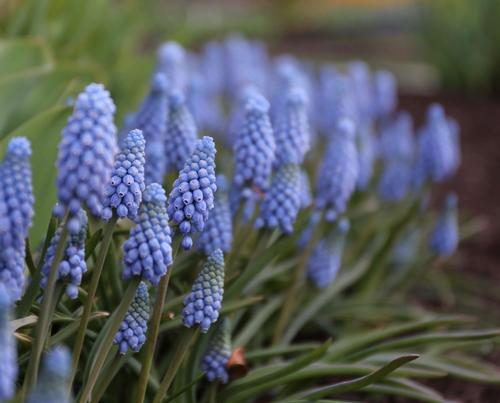
While red and yellow are warm colors, blue has a low “color temperature.” We experience blue hues as cool and find them calming, soothing and relaxing. In the garden, blue flowers have another interesting quality: they seem to recede from us. This can be used to increase the sense of openness and expansion in your garden.
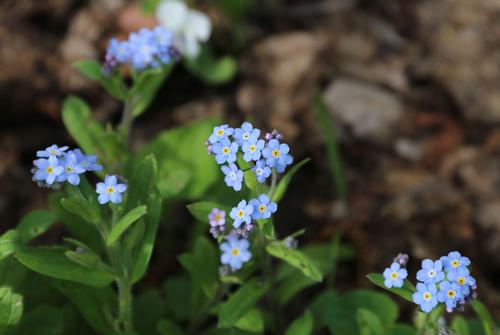
Understanding Blue in the Color Wheel
On the color wheel, red, yellow and blue form a powerful triad. Each of these primary colors is pure and distinct, as different from each other as can be. This is why there’s no better way to accentuate the color blue than to place it near red or yellow.
To see how well this can work, consider the paintings of Johannes Vermeer, among the most admired of all Dutch artists. Vermeer’s use of primary colors was masterful – especially his carefully composed combinations of blue and yellow. When working to incorporate blue flowers into your garden, it helps to think like a painter. Use this precious hue with intention -- to delight the eye and soothe the soul.

Tips for Using Blue in a Flower Garden
Vermeer was precise and sparing in his use of red, yellow and blue. He knew that too much of a primary color can be tiring on the eyes. In most of Vermeer's paintings the primary colors appear in a muted form as tints (diluted with white) or shades (diluted with black).
Gardens call for the same restrained approach. As a general rule, it's best to use blue flowers as accents. Nature makes this easy, because so few flowers are a pure, true blue. More commonly they are tints or shades of blue.

Blue Can Be Daring or Demure
In the late 20th century, the color trend in gardens was pastels. Today, gardeners are often drawn to more intense colors and bolder combinations. If these bold, dramatic colors appeal to you, experiment by pairing blue with its complementary color, orange. You'll achieve a look that’s both modern and electrifying.
British garden designer Gertrude Jekyll wrote “blues will be more telling – more purely blue – by the juxtaposition of rightly placed complementary color.” You could take a seasonal approach to these pairings. In spring you could plant blue grape hyacinths (muscari armeniacum) with orange Sun Lover tulips. Fill a summer container with Salvia patens and orange tithonia. In fall, pair blue asters with orange mums.

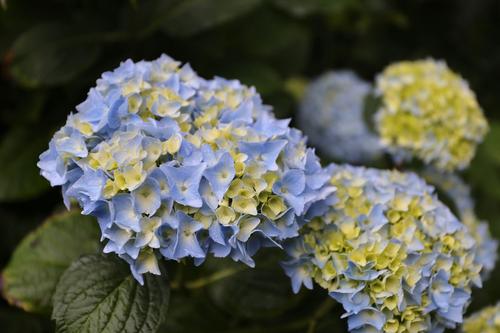
Another way to preserve and accentuate the restive nature of blue is to pair it with silver or grey foliage. These cool, neutral colors make pure blues look more brilliant. They also reflect just a hint of blue to create a harmonious color bridge.
Combining blue with an analogous color is yet another option. Analogous colors are adjacent to each other on the color wheel and have a pleasing visual harmony. Purple and blue are analogous colors and you can count on them to work well together.
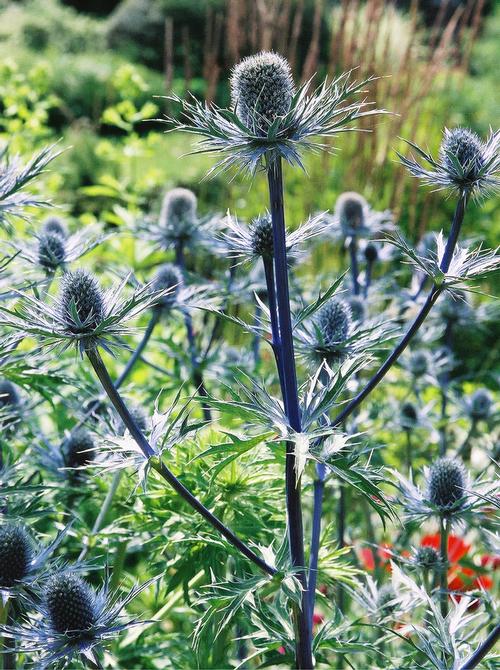
Some of the Best Blue Flowers for Gardens
Annuals and Tender Perennials with Blue Flowers: Agapanthus, Borage, Lobelia, Morning Glory, Nigella, Phacelia, Plumbago, Salvia
Perennials with Blue Flowers: Agapanthus, Amsonia, Brunnera, Campanula, Clematis, Delphinium, Echinops, Eryngium, Gentian, Geranium. Iris, Linum, Meconopsis, Mertensia, Myosotis, Periwinkle, Phlox, Platycodon, Pulmonaria, Rosemary, Salvia, Viola
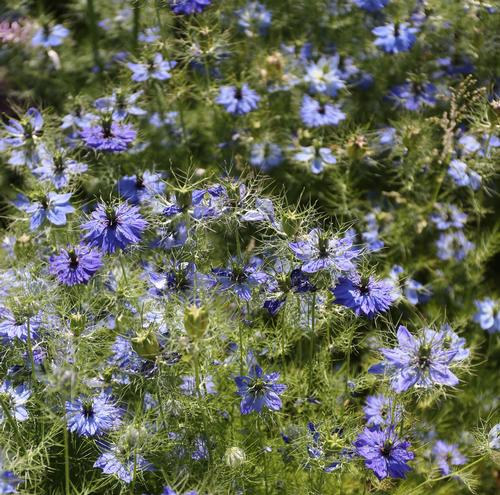
Bulbs with Blue Flowers: Camassia, Chionodoxa, Hyacinth, Muscari, Pushkinia, Scilla
Shrubs with Blue Flowers: Ceanothus, Hydrangea, Lilac, Wisteria
Foliage with a Blue Hue: Agave, Blue oat grass, Euphorbia, Festuca glauca, Fothergilla, Hosta, Juniper, Lavender, Sedum

Blue Color Accents for Your Garden
One of the best ways to introduce blue into your garden is with paint. Repainting an arbor, trellis or tuteur; a door, gate or fence; a bench or chair can give your garden a big lift. Add a splash of blue by accessorizing your garden with a blue-glazed pot or a gazing ball. Even a blue watering can!
If you'd like to learn more about using color in your garden, we also have articles about: Purple, Pink, Burgundy, Orange, Red and White.

